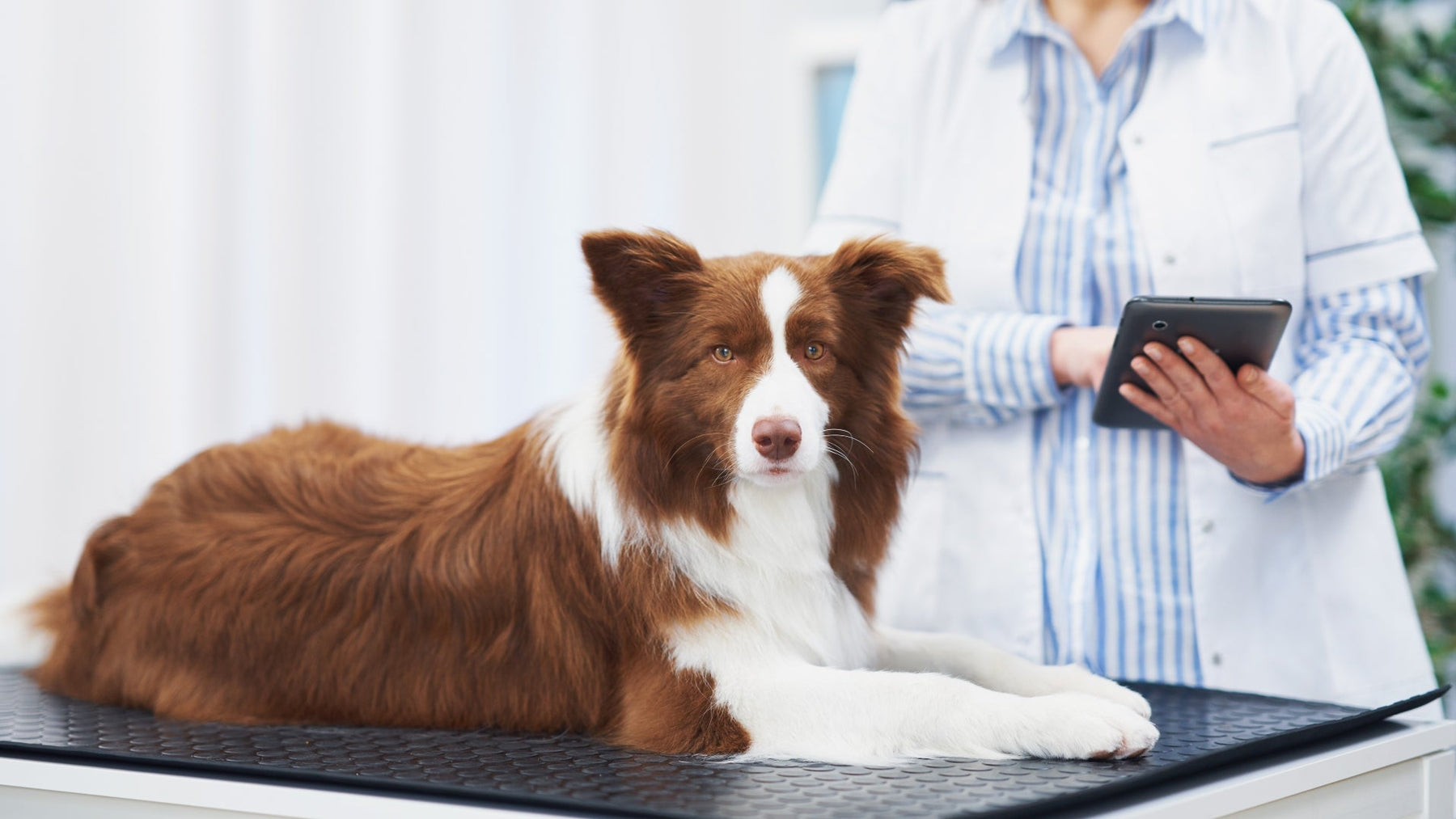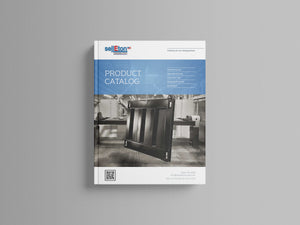
Veterinary Scales: Complete Guide to Animal Weighing Equipment
Accurate animal weight measurement forms the foundation of effective veterinary care, influencing everything from medication dosing to nutritional assessments. Veterinary scales represent specialized weighing equipment designed specifically to weigh animals safely and precisely, accommodating the unique challenges that come with measuring moving, anxious, or uncooperative subjects.
Unlike standard scales, veterinary scales incorporate advanced features like motion sensing technology, animal-specific platforms, and hold functions that capture stable readings despite movement. These sophisticated instruments typically maintain accuracy requirements of 0.1-0.5% across their full weight range, making them essential tools for veterinarians, animal health professionals, and livestock managers who depend on precise measurements for treatment planning and health monitoring.
What Are Veterinary Scales and Why They Matter
Veterinary scales serve as specialized weighing instruments engineered to provide accurate weight measurements for animals ranging from small birds to large livestock. These scales differ significantly from conventional weighing equipment through their incorporation of animal-specific design features that address the inherent challenges of weighing live subjects.
The importance of precise animal weight extends far beyond simple record-keeping. Medication dosing requires exact weight measurements to ensure therapeutic effectiveness while avoiding toxicity - a critical consideration when the difference between a healing dose and a harmful one can be measured in milligrams per kilogram of body weight. Similarly, nutritional planning, anesthetic calculations, and treatment monitoring all depend on accurate weight data.
Modern veterinary scales incorporate motion-sensing technology that averages weight readings over several seconds, effectively filtering out the fluctuations caused by animal movement. This averaging function, combined with auto-hold features, ensures reliable measurements even with restless or anxious animals. The result is a significant improvement in measurement accuracy compared to attempting to weigh animals on standard scales.
Statistical analysis shows that accuracy requirements for veterinary applications typically fall within 0.1-0.5% of the measured weight, with some specialized applications requiring even greater precision. This level of accuracy becomes particularly crucial when dealing with small animals where minor weight variations can indicate significant health changes.
Types of Veterinary Scales by Animal Size
Small Animal and Pet Scales
Small animal scales cater to the precise weighing needs of cats, small dogs, birds, and reptiles, offering capacities ranging from 35 ounces to 44 pounds. These compact units excel in clinical environments where space efficiency and precision matter most.
The resolution capabilities of small animal scales set them apart from larger units, with some models providing increments as fine as 0.02 lb. This precision proves essential when monitoring weight changes in small animals, where even minor fluctuations can signal health concerns. Many units feature 8” x 5.75” platforms that provide adequate space for small animals while maintaining portability.
Design features for small animal scales often include detachable bowls for weighing very small animals or those requiring containment during the weighing process. Non-tip safety features prevent accidents, while many models incorporate a stainless steel platform that resists scratches and provides easy cleaning between patients.
Digital displays on small animal scales typically show weights in multiple units, allowing veterinarians to quickly switch between pounds, kilograms, and ounces depending on their documentation requirements or regional preferences.
Medium to Large Dog Scales
Platform scales designed for medium to large dogs bridge the gap between small animal precision and livestock durability. These units typically offer weight capacity ranging from 250 to 550 pounds, accommodating everything from medium-sized dogs to large breeds like Great Danes and Saint Bernards.
Large platforms measuring 42-43 inches long by 20 inches wide provide ample space for animals to stand comfortably during weighing. The platform size consideration becomes crucial for animal cooperation - insufficient space can cause anxiety and movement that compromises measurement accuracy.
Low-profile designs maintain platform heights under 2 inches, facilitating easy animal access without requiring assistance for most dogs to step onto the scale. This walk-on style eliminates the stress and potential injury risks associated with lifting large animals onto elevated platforms.
Most medium to large dog scales include rubber safety mats that provide secure footing and reduce slipping. These mats also help calm nervous animals by providing a familiar, stable surface that doesn’t feel cold or slippery under their paws.
Livestock and Equine Scales
Heavy-duty livestock scales represent the most robust category of veterinary weighing equipment, designed to handle animals weighing up to 3000 pounds. These industrial-grade units accommodate horses, cattle, sheep, goats, and other large livestock with the durability required for farm and ranch environments.
Construction of livestock scales emphasizes rugged reliability, featuring powder-coated steel platforms that resist corrosion from outdoor exposure and frequent cleaning. The engineering must account for the substantial forces generated by large animals, particularly during movement or if animals become agitated during weighing.
Low 1.75” profile designs allow these substantial scales to fit into existing alleyways and livestock handling systems without requiring significant facility modifications. This compatibility with existing infrastructure makes adoption easier for livestock operations already invested in particular handling systems.
Specialized livestock scales incorporate tread plate surfaces that provide superior traction for hooved animals. These textured surfaces reduce slipping risks while allowing for thorough cleaning and disinfection between animals - essential considerations in livestock operations where disease prevention takes priority.
Essential Features and Specifications
Weight capacity represents the fundamental specification for any veterinary scale, with ranges extending from 35 ounces for the smallest animals to 3000 pounds for large livestock. Proper capacity selection requires consideration of the largest animals typically weighed, with some safety margin to prevent overloading.
Resolution specifications determine the smallest weight increment the scale can detect and display. Small animal applications benefit from 0.02 lb increments, while larger animals may use 0.1 to 1 lb resolution depending on the application. The key lies in matching resolution to the clinical requirements - finer resolution provides better sensitivity for detecting small changes but may be unnecessary for basic livestock weighing.
Motion-sensing technology and hold functions capture stable weights from moving animals through sophisticated averaging algorithms. These features continuously sample weight readings and calculate averages over predetermined time periods, automatically locking the display when stable readings are achieved. This eliminates the guesswork and frustration associated with trying to read fluctuating displays.
Tare functionality enables weighing animals in carriers, crates, or other containers by automatically subtracting the container weight from the total measurement. This feature proves particularly valuable for small animals that require containment during weighing or when transport carriers need to remain with the animal for stress reduction.
Construction and Durability Standards
Stainless steel platforms and frames provide the corrosion resistance necessary for veterinary environments where frequent cleaning and disinfection are standard practice. The material choice affects both longevity and hygiene, as stainless steel resists bacterial growth and withstands repeated exposure to veterinary disinfectants without degrading.
Load cell technology forms the heart of modern veterinary scales, with four-point mounting systems providing superior accuracy and stability. Four load cells distribute the animal’s weight evenly across the platform, reducing errors from uneven weight distribution and improving overall measurement reliability. This technology eliminates the mechanical wear points that plagued older scale designs.
Chemical-resistant materials extend beyond the platform to include all exposed components. Veterinary disinfectants can be harsh on equipment, making material selection crucial for long-term durability. Protected electronics and sealed connections prevent moisture and cleaning chemicals from damaging sensitive components.
Non-skid surfaces and adjustable footpads ensure stability on various floor surfaces commonly found in veterinary facilities. Uneven floors can compromise scale accuracy, making adjustable feet essential for proper installation. Anti-vibration footpads also help isolate the scale from building vibrations that could affect sensitive measurements.
Display and Technology Features
Digital Display Options
LCD displays on veterinary scales range from basic 1.0” numerals to large graphical displays featuring 0.8” digits for easy reading across the room. Display size becomes particularly important in busy clinical environments where multiple staff members may need to read measurements from various distances.
Wall-mountable and desk-mountable display units with 6-foot cables provide installation flexibility, allowing the display to be positioned optimally for the specific workspace. This separation between platform and display prevents damage from animal contact while ensuring visibility for operators.
Backlit LED displays enhance readability in various lighting conditions commonly encountered in veterinary facilities. Poor lighting can lead to misread measurements, making clear, bright displays essential for accuracy. Many units automatically adjust brightness or provide manual controls for different environments.
Multiple unit display capabilities allow instant conversion between pounds, kilograms, and ounces without manual calculation. This feature proves valuable in practices that serve diverse clientele or when documentation requires specific units. Quick unit switching reduces errors and improves workflow efficiency.
Advanced Weighing Technology
Animal weighing functions average weights over predetermined time periods, filtering out movement-induced fluctuations to provide stable readings. These algorithms can typically be adjusted for different animal types and temperaments, with longer averaging periods for more active animals.
Auto-zero and auto-lock features maintain consistent measurements by automatically compensating for minor platform drift and locking displays when stable readings are achieved. Auto-zero functionality prevents small environmental changes from affecting accuracy, while auto-lock eliminates timing guesswork for operators.
Memory functions enable tracking animal weight histories within the scale itself, providing valuable trend data for health monitoring. Some units store dozens of previous measurements with date and time stamps, creating a portable record that travels with mobile veterinary services.
RS232 ports and connectivity options facilitate data recording and integration with practice management software. Electronic data transfer eliminates transcription errors while streamlining record-keeping workflows. Modern units may include USB, Bluetooth, or wireless connectivity for seamless integration with digital systems.
Power Options and Portability
AC adapter operation provides consistent power for stationary use in veterinary clinics, eliminating concerns about battery depletion during busy periods. Reliable power ensures continuous operation without interruption for charging or battery replacement.
Battery options accommodate mobile veterinary services and field applications, with choices including 4-6 AAA batteries, 9V batteries, or rechargeable battery packs. Different battery types offer varying advantages in terms of capacity, replacement convenience, and cost of operation.
Battery life specifications typically range from 12-20 hours of continuous use to up to 1200 hours in standby mode, depending on the scale model and battery type. Understanding power consumption helps mobile practitioners plan their service routes and ensures adequate power for full-day operations.
Portable designs incorporate carry handles and compact form factors that facilitate transport to various locations. Mobile veterinary services particularly benefit from lightweight, portable units that can be easily transported between farm calls or house visits without requiring multiple operators.
Maintenance and Calibration
Regular calibration requirements maintain the 0.1-0.3% full load accuracy that veterinary applications demand. Calibration frequency depends on usage intensity, environmental conditions, and manufacturer recommendations, but typically ranges from monthly to annually for most veterinary applications.
Cleaning protocols using veterinary-approved disinfectants ensure hygiene without damaging scale components. Proper cleaning procedures extend equipment life while maintaining the sanitary conditions required in veterinary environments. Many scales feature sealed components that facilitate thorough cleaning without risk of moisture damage.
No moving parts designs reduce maintenance needs by eliminating mechanical wear points that historically required frequent attention. Digital load cell technology provides inherent reliability advantages over mechanical systems, reducing downtime and maintenance costs over the equipment’s lifespan.
Warranty periods typically range from 1-3 years depending on the model and manufacturer, reflecting the confidence manufacturers have in their equipment design and construction. Extended warranties may be available for high-use applications or critical installations where downtime cannot be tolerated.
Understanding warranty coverage helps practices budget for equipment replacement and plan for potential service needs. Some warranties cover parts and labor, while others may be limited to parts only, affecting the total cost of ownership.
Choosing the Right Veterinary Scale
Capacity considerations must account for the largest animals typically weighed in the practice, with adequate safety margin to prevent overloading. Overloading can damage load cells and compromise accuracy, making proper capacity selection crucial for both performance and equipment longevity.
Platform size requirements balance animal comfort with space constraints in the practice facility. Larger platforms generally provide better animal cooperation but require more floor space. The ideal size accommodates the target animals comfortably while fitting within available space.
Portability needs vary significantly between mobile practices and stationary clinic use. Mobile veterinarians prioritize lightweight, compact designs with reliable battery operation, while stationary installations may emphasize maximum capacity and advanced features over portability.
Budget considerations extend beyond initial purchase price to include total cost of ownership factors such as calibration requirements, battery replacement costs, and expected service life. Factory direct pricing options may provide cost savings but should be evaluated against local service availability and warranty support.
Additional factors to consider include the specific animals served by the practice, staff comfort with technology features, integration requirements with existing systems, and future practice growth plans that might affect scale requirements.
The selection process benefits from hands-on evaluation when possible, allowing staff to assess ease of use, display readability, and overall suitability for the specific practice environment. Many suppliers offer demonstration units or trial periods that facilitate informed decision-making.
Veterinary scales represent a critical investment in practice capability and animal care quality. The right scale choice enhances diagnostic accuracy, improves workflow efficiency, and provides the reliable performance that veterinary professionals require for optimal patient care. By carefully evaluating capacity needs, feature requirements, and budget constraints, practices can select equipment that serves their immediate needs while providing room for future growth and changing requirements.
Taking time to thoroughly assess these factors ensures that the chosen veterinary scale will provide years of reliable service while supporting the highest standards of animal care. Whether serving small companion animals or large livestock, the right weighing equipment forms an essential foundation for effective veterinary practice.

